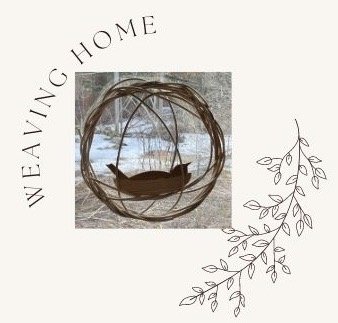It seems like driving on the New York State Thruway in February can be a Lenten wilderness experience. First, there are many obstacles: accidents, repair trucks, snow plowers, the stranded motorist, and of course the State Police hiding in the turn arounds trying to capture a speeder so there won’t be more accidents and repair trucks. Then, there are those huge tractor trailers hauling two freight boxes - why aren’t they on the railroad and why isn’t this illegal??!!! Also, there is the dry road that turns into a snow covered road in the night when you can’t see the change and wonder why the cars are slowing down, until you get into the passing lane and see the reason. And then there is driving through Albany at night during rush hour. Oh I know it’s much worse off the thruway, in fact getting off at one of the Albany exits, there is often a line of cars backed up on the exit ramp. This is just an easy trip, it wasn’t anywhere near New York City or Buffalo.
As I was driving through Albany, in the dark, with falling snow, at a fast rate, there were cars passing on both sides, cutting in and out. I normally would be screaming and swearing at them, ‘what is wrong with you?’ I get so angry because I’m afraid to drive with all that traffic, first because I’m used to driving with just a few cars around and a lot of deer, second because I didn’t get my drivers license until I was 40-something and that doesn’t give you a lot of young ‘I can do anything’ confidence. But I’ve been working on stillness, detachment and letting go, so instead of screaming, I sent the other drivers love, though I was still afraid, it wasn’t so bad. And by sending them love, I stopped judging them and began to wonder if the other drivers are afraid too, I wonder if they drive so fast threw the many lanes of Albany traffic because they want to get out of there too?
"Be not afraid" does not say that we should not have fears — and if it did, we could dismiss it as an impossible counsel of perfection. Instead, it says that we do not need to be our fears, quite a different proposition. — Parker J. Palmer in The Courage to Teach
So we can come face to face with ourselves in the wilderness, with our fears, with what gets under our skin and makes us act in certain ways,. When we are on a Lenten journey, we take the time to see, to let our inner nature see the false self that so often holds us hostage. Seeng with the eyes of the heart can reveal all the pettiness and fear that tends to drive us into habitual directions of non-functionality.
The first gospel reading for the first Sunday in Lent is always Jesus going out into the wilderness to face his inner demons, or his false self. So being in the wilderness can be a time of deeply looking into the mirror of our self and seeing those things that keep us from our true self or wholeness. Sometimes just noticing them is enough, sometimes, after we’ve noticed them a couple of times we can let them go. But often we have to notice them a lot of times before we can let them go.
An amazing thing about those things that hold us back is that part of them are true. In the Bible story, Jesus could have turned stones into bread for himself, but instead he turned 5 loaves and two fishes into a big meal to feed five thousand people. He could have taken over the government but instead he taught people about the value of believing in peace so much that he would not use violence against violence. And he didn’t throw himself from the top of the temple but he walked on water, he raised people from the dead, he turned water into wine. He used his power to bring life and health and peace, not glory to himself.
That is what the wilderness taught Jesus when he ventured out after his momentous baptism. What does the wilderness teach us? How do we react to life as it happens around us? Are we sending out love or fear? It’s up to us to choose.

